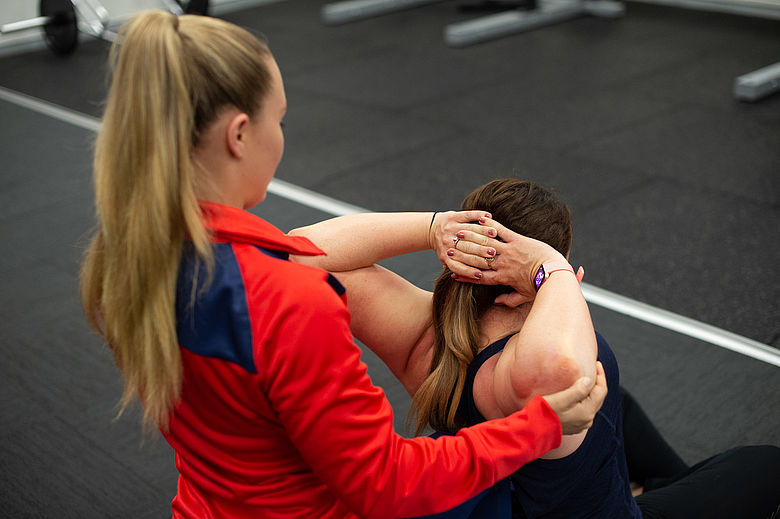Stretching is a crucial component of any exercise routine and daily activity. It helps improve flexibility, reduce the risk of injury, and enhance overall physical performance. There are two primary types of stretching: dynamic and static. Understanding the differences and benefits of each can help you optimise your workout routine.
What Is Static Stretching?
Static stretching involves holding a stretch in a challenging but comfortable position for a period of time, typically between 15 to 60 seconds. This type of stretching is usually performed post-workout when the muscles are warm and more pliable.
Benefits of Static Stretching
- Improve Flexibility: Regular static stretching can increase your range of motion and flexibility.
- Muscle Recovery: It helps in reducing muscle soreness and stiffness post-exercise.
- Relaxation: Holding stretches can promote relaxation and reduce stress.
Examples of Static Stretches
- Hamstring Stretch: Sit on the ground with one leg extended and the other bent. Reach towards your toes and hold.
- Quadriceps Stretch: Stand on one leg, pull your other foot towards your buttocks, and hold.
- Calf Stretch: Stand facing a wall, place one foot behind the other, and press your heel into the ground.
What Is Dynamic Stretching?
Dynamic stretching involves active movements that take your muscles through a full range of motion. This type of stretching is typically performed pre-workout to prepare the muscles for activity.
Benefits of Dynamic Stretching
- Warming Up Muscles: Increases blood flow and muscle temperature, preparing your body for exercise.
- Improving Range of Motion: Enhances joint flexibility and mobility.
- Injury Prevention: Prepares muscles and joints for the stresses of physical activity, reducing the risk of injury.
Examples of Dynamic Stretches
- Leg Swings: Swing one leg forward and backwards or side to side in a controlled manner.
- Arm Circles: Extend your arms and make circular motions, gradually increasing the size of the circles.
- Walking Lunges: Step forward into a lunge, alternating legs as you move forward.
Comparing Static vs Dynamic Stretching
Key Differences
- Movement: Static stretching involves holding a position, while dynamic stretching involves active movements.
- Timing: Static stretches are best performed post-workout, whereas dynamic stretches are ideal for warming up pre-workout.
When to Use Each Type
- Pre-Workout: Use dynamic stretching to prepare your muscles and joints for activity.
- Post Workout: Use static stretching to cool down and aid in muscle recovery.
Benefits of Incorporating Both Types
Combining static and dynamic stretching can provide comprehensive benefits for your exercise routine. Dynamic stretches can prepare your body for the workout ahead, while static stretches can help with recovery and flexibility.
Examples of How to Integrate Both
- Pre-Workout Routine: Start with 5-10 minutes of dynamic stretches like leg swings and arm circles.
- Post Workout Routine: Finish with 5-10 minutes of static stretches like hamstring and quadriceps stretches.
Practical Tips for Stretching
Best Practices for Safe Stretching
- Warm Up First: Always warm up your muscles before stretching to prevent injury. For upper body warm-ups, check out our instructions on some popular arm warm-up exercises.
- Listen to Your Body: Stretch to the point of mild discomfort, not pain.
- Breathe: Maintain steady breathing while stretching to help relax your muscles.
Tips for Beginners
- Start Slow: Gradually increase the intensity and duration of your stretches.
- Consistency: Stretch regularly to see improvements in flexibility and performance.
- Seek Guidance: Consider working with a fitness professional to learn proper techniques.
Common Mistakes to Avoid
- Bouncing: Avoid bouncing during static stretches as it can cause injury.
- Overstretching: Don’t push your body beyond its limits.
- Ignoring Pain: If you feel pain, stop immediately and reassess your technique.
Both dynamic and static stretching offer unique benefits that can enhance your exercise routine. By incorporating both types of stretching, you can improve flexibility, prevent injuries, and optimise your overall physical performance. Remember to stretch regularly and follow best practices to achieve the best results. Consider personal training for personalised expert guidance on correct stretching & exercising techniques, and proper dietary plans.

